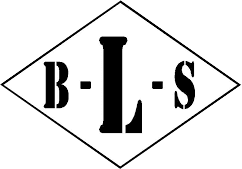The Importance of Emergency Eye Wash Stations in Hazardous Work Environments

Workplace safety is a top priority for any industry, particularly in environments where workers are exposed to hazardous materials, chemicals, or airborne debris. Among the many safety measures that must be in place, an emergency eye wash station is critical in preventing serious eye injuries and ensuring worker protection. These stations provide immediate relief in case of exposure to harmful substances, reducing the risk of permanent damage.
Risks in Hazardous Work Environments
Many industries expose workers to risks that can lead to eye injuries. From manufacturing plants and laboratories to construction sites and chemical processing facilities, employees face potential hazards daily.
Common Workplace Hazards Affecting Eyes
- Chemical Exposure: Workers handling acids, alkalis, solvents, or other hazardous chemicals are at significant risk. Even a small splash can cause severe burns, irritation, or blindness.
- Flying Particles and Debris: Construction, metalworking, and woodworking industries generate airborne debris, including dust, shavings, and metal fragments, which can penetrate or scratch the eyes.
- Radiation and UV Exposure: Welders, laboratory technicians, and workers handling lasers or ultraviolet (UV) light must be protected from harmful radiation that can cause eye burns and long-term vision problems.
- Biological Hazards: Healthcare and laboratory professionals may encounter infectious agents that pose risks of contamination through eye contact.
- Extreme Heat or Steam: Foundries, glass manufacturing, and other high-temperature industries expose workers to extreme heat, increasing the likelihood of burns and scalding injuries to the eyes.
With such risks present, it is vital to have emergency response systems, such as eye wash stations, readily available in the workplace.
Function and Benefits of Eye Wash Stations
Emergency eye wash stations are designed to flush contaminants from the eyes quickly, minimizing potential damage and improving recovery outcomes. Their primary function is to provide immediate and sustained irrigation to remove irritants and hazardous substances.
Design Features of Effective Eye Wash Stations
To ensure effectiveness, eye wash stations must have the following features:
- Continuous and Adequate Flow: The station should provide a steady stream of water or a sterile solution for at least 15 minutes to remove contaminants thoroughly.
- Hands-Free Operation: Workers should be able to activate the station with a single motion, allowing for immediate flushing without delay.
- Tepid Water Temperature: The American National Standards Institute (ANSI) recommends that water temperature should be between 60°F and 100°F to prevent thermal shock or additional injury.
- Accessible and Clearly Marked Location: Stations should be positioned within a 10-second reach from hazardous areas and easily identifiable through clear signage.
- Corrosion-Resistant Materials: Eye wash stations should be constructed with materials that withstand harsh environments, including exposure to chemicals and extreme temperatures.
Benefits of Emergency Eye Wash Stations
- Immediate Relief and Injury Prevention: Prompt irrigation of the eyes can prevent chemical burns, reduce irritation, and improve the chances of full recovery.
- Compliance with Workplace Safety Regulations: Properly installed and maintained stations help businesses meet legal safety requirements.
- Increased Worker Confidence and Productivity: Employees feel more secure knowing that emergency systems are in place, reducing hesitation in handling hazardous materials.
- Reduced Liability for Employers: Ensuring compliance with safety measures minimizes the risk of workplace injury claims and legal issues.
Legal Requirements and Standards
Installing and maintaining an emergency eye wash station is not just a recommendation; it is a legal obligation in many industries. Compliance with regulatory standards is crucial for workplace safety.
Compliance with OSHA and ANSI Standards
- OSHA Regulations (29 CFR 1910.151(c)): The Occupational Safety and Health Administration (OSHA) mandates that workplaces where hazardous materials are handled must provide suitable facilities for quick eye irrigation.
- ANSI/ISEA Z358.1-2014 Standard: The ANSI standard specifies requirements for the performance, location, installation, and maintenance of emergency eye wash and shower equipment. Some key requirements include:
- Stations must deliver a consistent flow of flushing fluid for at least 15 minutes.
- Activation must be hands-free, allowing workers to operate the unit without manual effort.
- Equipment must be regularly tested to ensure proper functionality and accessibility.
Failure to comply with these regulations can result in hefty fines and increased liability risks for employers.
Prioritize Workplace Safety with B-L-S Industries, Inc.
Ensuring workplace safety should be a top priority for any company, especially those dealing with hazardous materials. An emergency eye wash station is a critical component of any safety program, providing immediate relief and preventing serious injuries.
At B-L-S Industries, Inc., we understand the importance of high-quality emergency eye and face wash stations. Since 1976, we have been committed to designing and manufacturing top-of-the-line emergency drench showers and eye wash stations that meet OSHA and ANSI requirements. Our reliable, compliant, and durable safety solutions ensure that your employees remain protected in hazardous work environments.
Whether you need standard eye wash stations, custom-designed units, or heated shower enclosures, B-L-S Industries, Inc. has the expertise and products to meet your needs. Don’t compromise on workplace safety—contact us today to learn more about our emergency eye wash solutions and how we can help keep your employees safe!
